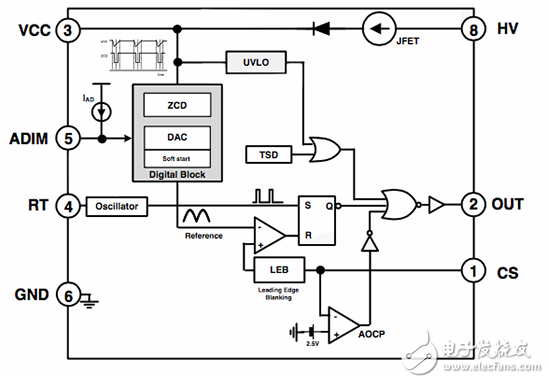
资料下载

LED照明的功率控制
LED照明的功率控制
智能照明是智能家居的关键之一。无线电和网络控制可以用来改变照明水平,无论是直接从用户控制,采用专用远程控制或智能手机应用程序的帮助下,或自动根据时间的一天。然而,LED照明电源控制需要特别考虑。传统的调光控制电路开发不符合固态照明的要求。
大多数的调光器安装在家里都是基于一个切相电路。这种类型的电路的优点是,它是非常简单的设计和强大的。该电路的工作原理是简单地切断电源的灯泡的交流周期的一部分,减少提供给灯丝的整体电压。这反过来又减少灯丝的光输出。由于相对较长的时间,它需要灯丝加热和冷却,这种切换是不明显的,除非用户可能在最低的设置调光器。
然而,与LED,其中有更短的响应时间,开关频率低的主电源意味着试图使用类似的策略来控制光输出将导致显着闪烁。因此,LED需要专门的电源电路,可以提供更一致的电压和电流输出,以提供功率,最大限度地减少闪烁而不影响效率。

Although it is possible to manipulate light levels from LEDs by altering the current supplied to them, this results in a drop in power efficiency at lower current levels. A power LED provides its best efficiency at the highest rated current. So, dimming behavior is still best obtained using pulse-width modulation (PWM) techniques, turning the LED on and off at higher frequencies than would be supported by traditional mains-based dimmer circuits.
In a PWM-based power converter, a reference signal fed back to the controller is used to determine whether the transistor that feeds power to the load should be on or off. The reference is compared to a periodic signal created by a ramp generator. While the reference signal is higher than the ramp, the transistor is switched on. When the reference signal falls below the ramp, the transistor is switched off. The integrated current delivered therefore follows the profile of the reference signal. Various techniques can be used to control the reference signal and therefore manipulate the power output. For smart-home use, power converters can integrate additional inputs that tune the reference signal based on the preferred dimming level.
声明:本文内容及配图由入驻作者撰写或者入驻合作网站授权转载。文章观点仅代表作者本人,不代表电子发烧友网立场。文章及其配图仅供工程师学习之用,如有内容侵权或者其他违规问题,请联系本站处理。 举报投诉
- 相关下载
- 相关文章







